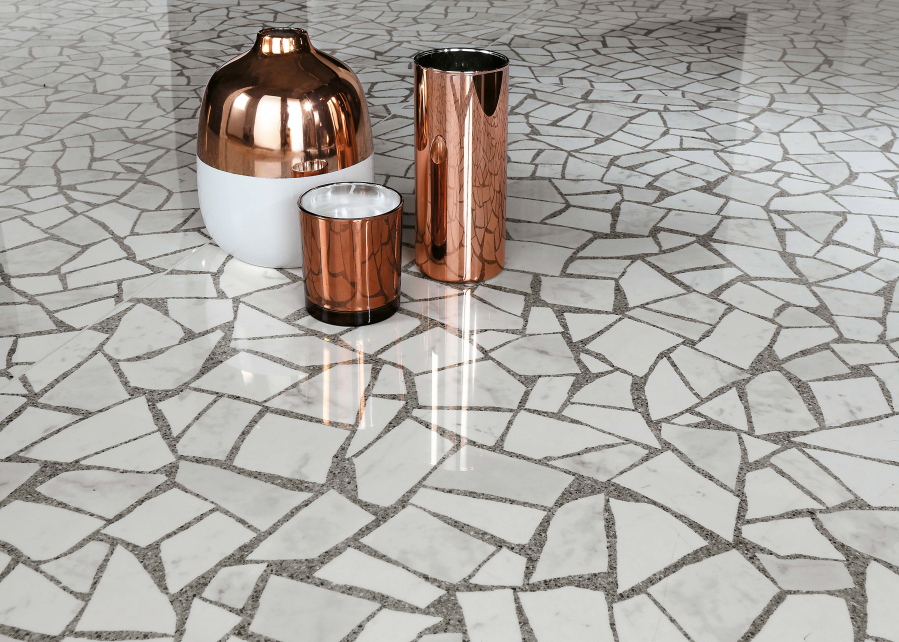Many of us think of terrazzo — a composite including chips of various stones and glass — as a utilitarian flooring material, something you see in lobbies or hallways.
But the centuries-old material is being rediscovered by architects and designers who are adapting its distinctive patterns for all kinds of surfaces, including furniture, and other creative uses.
Terrazzo was one of the first sustainably produced materials, says Venice-based interior designer and architect Elisabetta Rizzato.
“Craftspeople used waste materials — for instance, local Venetian stone off-cuts and chips from the construction of palazzos — to make decorative mosaic-like floors,” she says. “Eventually, they began introducing glass, metals and even concrete, all while consistently using local-material waste.”
The raw materials may have had humble origins, but Rizzato says terrazzo was popular with Renaissance aristocrats.
“It was the best flooring option (for palaces) because it was flexible and could adapt to structural failures of the wooden beams,” she says.
Terrazzo also became the darling of midcentury architects, who appreciated its elegant minimalism.
“Look at Frank Lloyd Wright’s terrazzo floors in the Guggenheim Museum,” says Paul Makovsky, vice president of design for the New York architecture and design magazine Metropolis. “Since it was built in 1959, over a million people walk on that floor each year, and it looks as good as new.”
Makovsky associates Art Deco terrazzo with “the construction of public buildings that were beautiful and meant to last. You know where you’ll see surprisingly beautiful terrazzo floors? The Hoover Dam.”
Easy-to-use options now include precast terrazzo made with durable resins.
London designer Max Lamb has created a precast terrazzo for Dzek called Marmoreal that can go on floors, walls and countertops. Colorful marble aggregate is embedded in white or black resin; the light version looks like nougat candy, while the dark one evokes a night sky.



